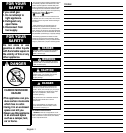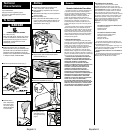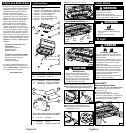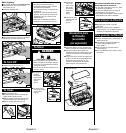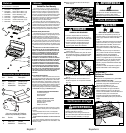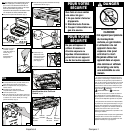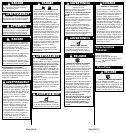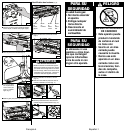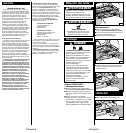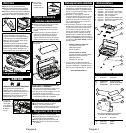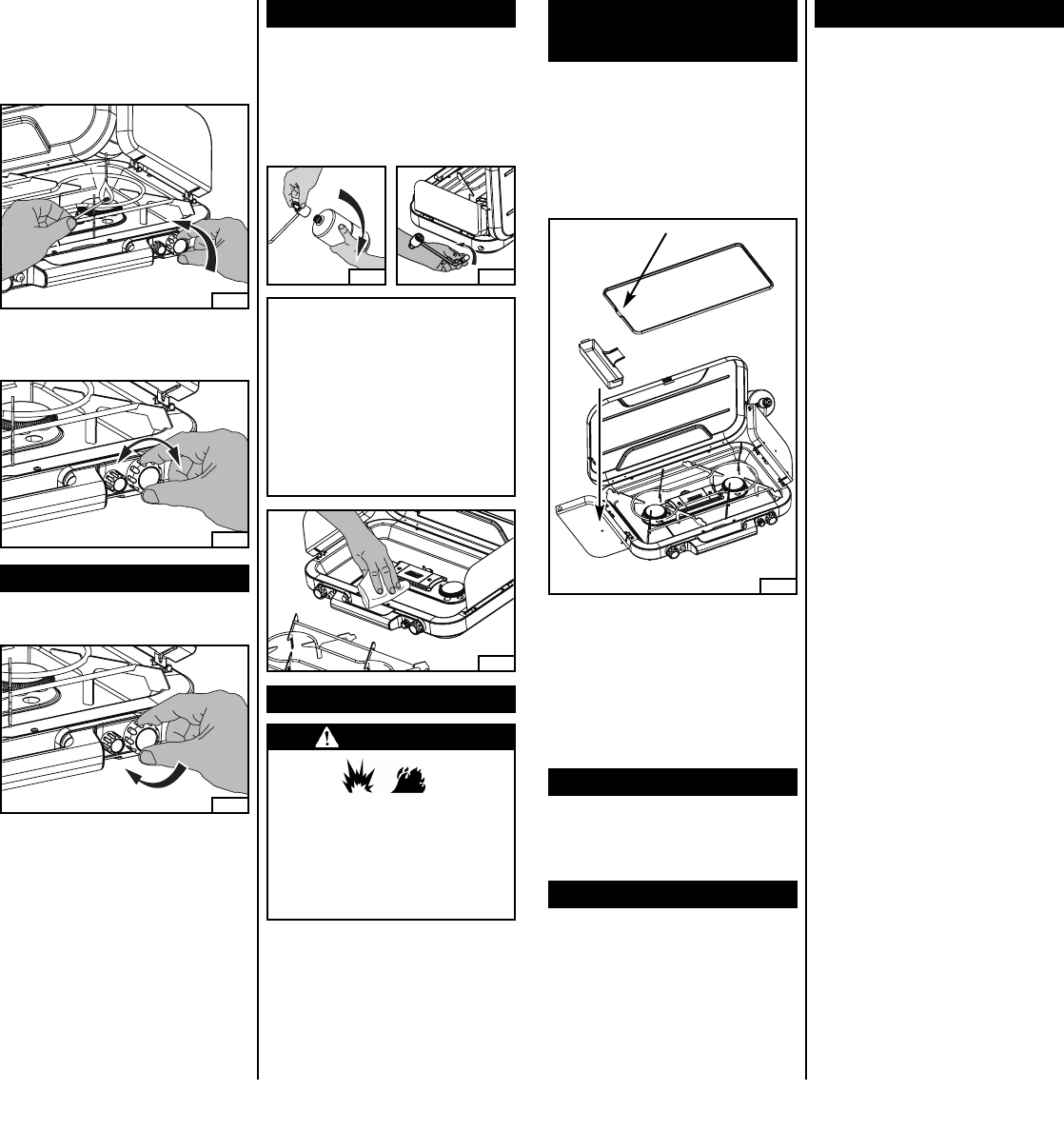
PELIGRO
• EXPLOSION - RIESGO DE FUEGO
• No almacene nunca el propano cerca calor
intenso, llamas directas, llamas de piloto, luz
solar directa, otras fuentes de ignición ni
donde las temperaturas excedan 120 grados
F (49°C).
• El cilindro debe ser desconectado cuando la
estufa está guardada.
Para Guardarla
Español-6
■ Ajuste la llama con la válvula del quemador.
(Fig. 16) La llama debería ser azul con un
poco de amarillo en las puntas.
Para Apagarla
Para Limpiarla
■ Asegúrese que la estufa esté fríal.
■ Ponga la estufa alejada de una llama
(incluyendo las llamas del piloto) y otras
fuentes de encendido.
■ Quite el cilindro de propano del regulador y
vuelva a poner la tapa protectora en el cilindro.
(Fig. 18)
■ Quite el regulador de la estufa.(Fig. 19)
• MANTENIMIENTO
• Conserve el área de la estufa despejada y
libre de materiales combustibles, gasolina y
otros vapores y líquidos inflamables.
• No obstruya el flujo de combustión ni la venti-
lación del aire.
• Una buena llama deberá ser azul con un
mínimo de amarillo en la punta. Algunas
puntas amarillas en las llamas son
aceptables siempre y cuando no aparez-
can depósitos de carbón o de hollín.
• Limpie con un paño suave y detergente
suave. No use abrasivos.(Fig. 20)
Fig. 15
Fig. 16
Fig. 17
Fig. 18
Fig. 19
Fig. 20
Encendido con Fósforo
■ Póngala en una superficie fuerte y plana. Para
usarla solamente al aire libre.
■ Mantenga el fósforo encendido cerca del que-
mador y abra la válvula del quemador. (Fig.15)
■ Repita para los tres quemadores.
■ Cierre completamente las válvulas del quemador.
(Fig. 17)
English-6
Things You Should Know
1.It is unsafe and illegal in some places to store or
use propane cylinders of greater than 1.14 kg (2.5
lbs) water capacity (approximately 1 lb.propane) in
occupied enclosures.
2.The usual storage areas for camping and picnic
equipment are the basement, attic, or garage.To
avoid the accumulation of dust, cobwebs, etc., that
is common in these areas, place your stove in a
plastic bag and seal it with a rubber band.
3.For repair service call one of the numbers on
the front cover for location of your nearest
Coleman Service Center.If a service center is not
conveniently located, attach to the product a tag
that includes your name, address, daytime
telephone number and description of the problem.
Carefully package the product and send either by
courier or insured mail with shipping and insurance
prepaid to:
For products purchased in the United
States:
The Coleman Company, Inc.
3600 North Hydraulic
Wichita, KS 67219
For products purchased in Canada:
Sunbeam Corporation (Canada) Limited
DBA Jarden Consumer Solutions
20B Hereford Street
Brampton, ON L6Y 0M1
4.If not completely satisfied with the performance
of this product, please call 1-800-835-3278 in the
US or
1 800 387-6161
in Canada.
www.coleman.com
Accessory Griddle
(sold separately)
Fig. 23
Grease
Cup
Griddle
Storing the Griddle
■ Place the grease cup under the pot support.
■ To protect the non-stick surface, place the griddle
into the griddle cover.
■ Invert the griddle and place on the pot support.
■ Close the wind baffles and the stove lid.
Cleaning the Griddle
■ Make sure stove and griddle are cool.
■ Wipe clean with soft cloth and mild dish
detergent. Do not use abrasives on the non-
stick griddle surface.
Grease Outlet
NOTE TO PREVENT DAMAGE WHICH WILL
VOID THE WARRANTY:
• Do not use pots, pans, ovens, etc., on this
griddle surface.
• Do not use this griddle on a campfire or
other open fire.
• Use this griddle only on the Coleman®
stove for which it was designed.
■ Extend the left wind baffle down to the utensil
tray position.
■ Place the grease cup on the utensil tray. The
grease cup engages the three holes on the
utensil tray.
■ Lay the griddle in the center of the pot support
with the grease outlet directed into the grease
cup (Fig.23). The tabs on the bottom side of
the griddle must engage the pot support.




